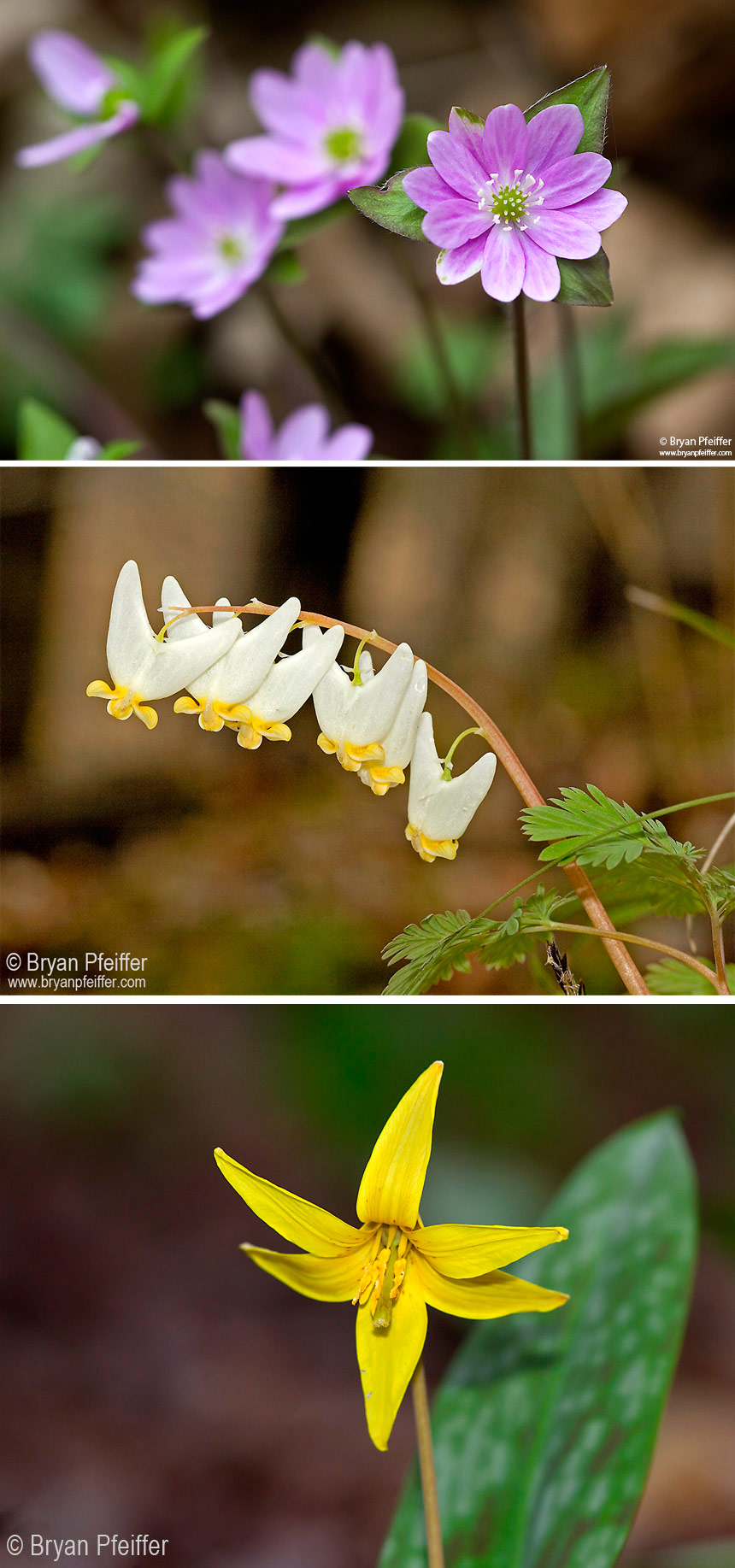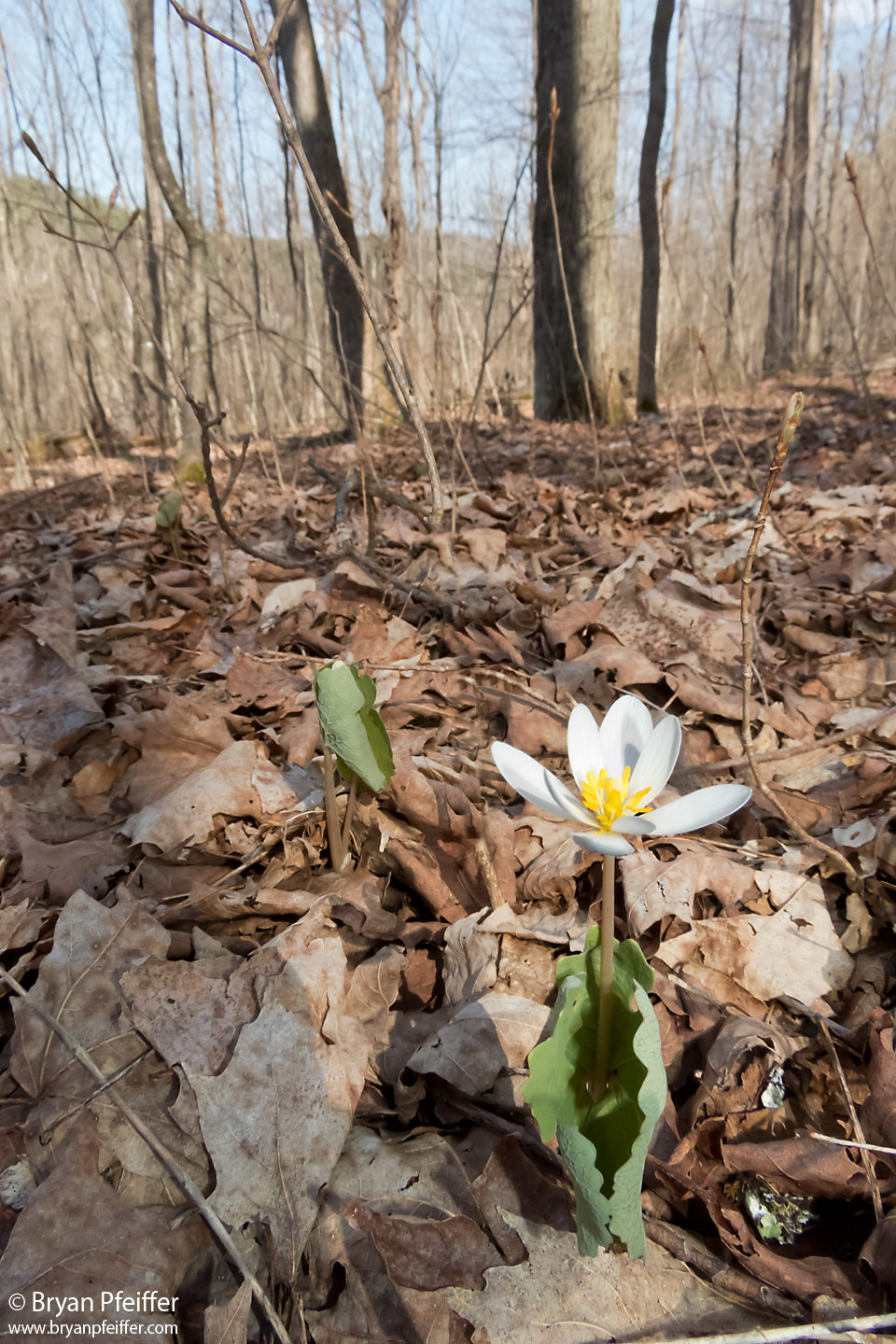Explosions in Earth and Sky
Songbirds and Spring Ephemeral Wildflowers
The Blue-headed Vireos battled for turf this morning here in Vermont. But rather than brute force, the vireos fought with music. Males were counter-singing a high, sweet “cheerio … be-seein’-you … see-ya!” Ruth and I encountered no fewer than eight Blue-headed Vireos singing at one another for territory during our 4.5-mile walk through the woods and meadows of Montpelier. All the while, looking up at them from the naked woods, were the other reasons to walk before the leaves break out: spring ephemeral wildflowers.
These blooms are ruthless opportunists, erupting before the forest canopy blocks the sun. Bloodroot (Sanguinaria canadensis), the flower on the right above, is now the star here at our latitude. Not far behind will be that one in the middle, Sharp-lobed Hepatica (Hepatica acutiloba), and perhaps already blooming near you the shocking pink Carolina Spring Beauty (Claytonia caroliniana).
The floral arrangement also features Dutchman’s Breeches, Squirrel Corn, Blue Cohosh, Wild Ginger, Trout Lily and several other species. Find them now in sweet woods — northern hardwoods whose soils are relatively rich in calcium. (That includes Vermont sugarwoods, where we’re done tapping for maple syrup.)
Bloodroot is elegance — those eight to 12 pearly petals subtly alternating in shape. Bloodroot is simplicity — nothing fancy in yellow, green and white. Bloodroot is bloody — producing a reddish liquid in its roots and leaves, a defensive toxin called sanguinarine. Bloodroot is a trickster — its seeds include a fleshy treat called an elaiosome. Ants love it. They bring the seeds to their colonies, eat the elaiosomes, then haul the seeds to their trash piles, where they germinate into more Bloodroot plants. A plant recruiting ants as farmers. Go figure.
Don’t wait to find these plants; we don’t call them ephemerals for nothing. Here in Vermont they’re already showing themselves and will be so only another week or two. Bloodroot can break your heart: after it’s been in bloom for a few days, raindrops can knock those petals back to the leaf litter from which they came.
Meanwhile, the other fireworks this morning featured Ruby-crowned Kinglets and Beaked Hazelnut — luscious red explosions from a bird’s crown and from a shrub. The first warblers are moving in, including an early Yellow Warbler here in Montpelier.
Here’s our bird list — 41 species — from the smallest state capital in the nation and the best city on earth. Beside the list I give you more Hepatica, along with Dutchman’s Breeches and Trout Lily. So no bird images here on the blog today — just flowers.
Onward into spring!
 Canada Goose
Canada Goose
Wood Duck
Mallard
Hooded Merganser
Wild Turkey
Broad-winged Hawk
Rock Pigeon (Feral Pigeon)
Mourning Dove
Belted Kingfisher
Yellow-bellied Sapsucker
Downy Woodpecker
Hairy Woodpecker
Northern Flicker
Blue-headed Vireo
Blue Jay
American Crow
Tree Swallow
Black-capped Chickadee
Tufted Titmouse
Red-breasted Nuthatch
White-breasted Nuthatch
Brown Creeper
Golden-crowned Kinglet
Ruby-crowned Kinglet
Hermit Thrush
American Robin
Brown Thrasher
Yellow Warbler
Pine Warbler
Yellow-rumped Warbler (Myrtle)
Chipping Sparrow
Dark-eyed Junco
White-throated Sparrow
Song Sparrow
Swamp Sparrow
Northern Cardinal
Red-winged Blackbird
Common Grackle
House Finch
Purple Finch
American Goldfinch



Say hello to the prairie for me, Sandra!
Lots of Bloodroot below the trail I had mentioned to you — between the trail and the river.
Thanks, Ellen. But we have no flowering cacti here. 🙂
Oh, how much I have yet to return to you for all the botany wisdom you have given me!
Bryan Pfeiffer,
You have made my night! There are the flowers of my youth, those of my beloved mother, and those that bloom in places less acid than my own home. These are the flowers I sought on my trip to Burlington, but alas, I was too early!
Living in a drought-stricken desert landscape, I find these gorgeous images especially beautiful.
Phenomenal!
Wow!!!!